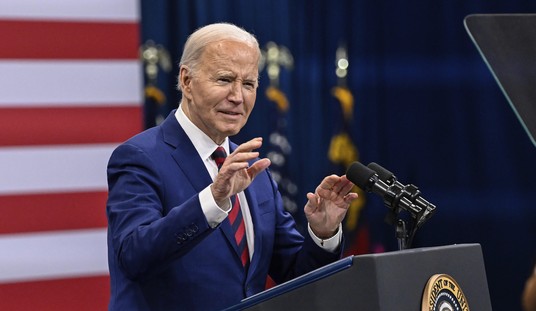Sen. Kent Conrad (D-N.D.) on Tuesday presented a budget proposal to Senate Democrats that calls for an even balance — 50 percent to 50 percent — of spending cuts and tax increases to reduce the deficit.
The emerging consensus on Capitol Hill is there should be at least $4 trillion in deficit reduction over the next 10 years. To meet that goal, Congress would have to increase tax revenues by $2 trillion over the next decade with an equal amount of spending cuts.
Reid said Sen. Conrad presented to the caucus a 50-50 split when asked about the preferred ratio of spending cuts to tax increases.
That's a more even ratio between spending cuts and tax increases than what President Obama's debt commission recommended last fall. It suggested reducing deficits through two-thirds spending cuts and one-third tax increases.
In a speech last month, Obama suggested a 3-1 ratio between spending cuts and tax increases in laying out his vision for reducing deficits.
Conrad has moved his budget proposal to the left in order togain the support of Sen. Bernie Sanders (I-Vt.), an outspoken progressive on the budget panel.
As the Hill story above points out, even President Obama's unserious debt-reduction "vision" only calls for a 3-to-1 cut/tax increase ratio; yet Senate Democrats have apparently agreed to spike taxes even further in their proposal in order to win the coveted endorsement of a self-proclaimed socialist. Wonderful.
Recommended
Meanwhile, back in adultville, a group of Republican conservatives with sterling fiscal bona fides have rolled out an alternate plan of their own. It balances the budget (but doesn't eliminate the national debt) within ten years -- without raising taxes -- but also declines to lay a glove on Medicare or Social Security. Sure, it's politically safer than the Ryan plan, but no entitlement reform? There's a reason why Paul Ryan has taken the risk of gripping the third rail of American politics, and it ain't just for the fun of it. Let's face it: Even if the Toomey/Rubio/Lee/Johnson/DeMint plan is enacted in its entirety, the US government will still owe tens of trillions in unfunded obligations to future generations, stretching as far as the eye can see.
Via Allahpundit, watch as Fox's Neil Cavuto grills Sen. Toomey on this point:
Of course, Toomey's plan is still light years ahead of the president's non-plan, or Kent Conrad's taxapalooza. Remember folks, John Boehner
UPDATE - Here are more details on the Toomey plan:
The proposal offered by freshman Sen. Pat Toomey (R-Pa.) and other conservatives would reduce government spending to 18.5 percent of the nation's gross domestic product and assumes a relatively high level of economic growth in order for the country to reach a modest surplus by 2021. Like the House GOP budget, it does not raise taxes.
The Toomey budget would reduce non-defense discretionary spending to 2006 levels in 2012, and freeze it at that level for the next six years. After that point, that spending would be indexed to the consumer price index.
On Medicaid, it would implement a block-grant program to the states (my note: this is similar to the Ryan plan), while gradually reducing Medicaid spending to $14 billion above fiscal 2008 levels by 2019.
It also would halve the number of individual tax brackets from six to three, with the top rate falling to 25 percent from the current 35 percent level. It also would lower the corporate tax rate from 35 percent to 25 percent. It also would index the alternative minimum tax to inflation.
On defense, the plan would adopt the cuts identified by Defense Secretary Robert Gates, and also assumes the complete withdrawal of American forces from Iraq and Afghanistan by 2018. It also would require that any future expenditures of supplemental war spending after that exit would have to be offset by spending reductions elsewhere.
Mandatory spending not tied to Social Security, Medicare or Medicaid would be reduced under the plan, ultimately falling to slightly more than 2007 levels by 2014. It also calls for fixed annual spending caps on welfare programs.
UPDATE II - The five Senators listed above aren't the only GOP co-sponsors of this budget:
Beyond the press-conference speakers, co-sponsors for the measure include Sen. Tom Coburn (R., Okla.), Sen. Richard Burr (R., N.C.), and Sen. David Vitter (R., La.).

























Join the conversation as a VIP Member